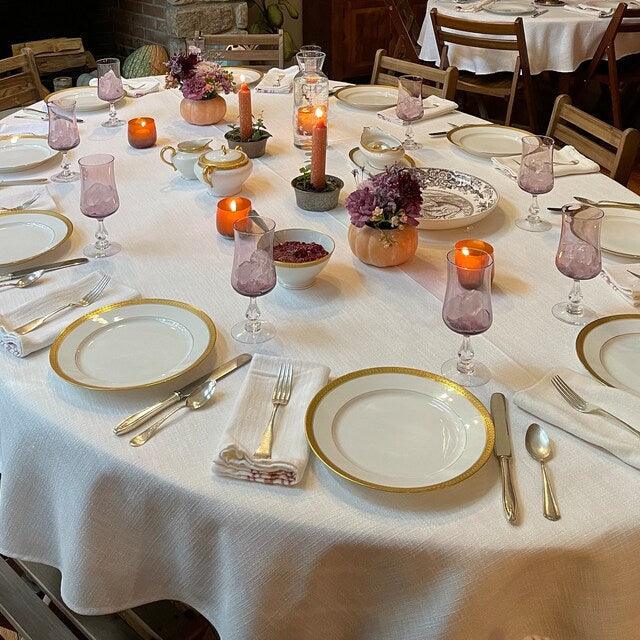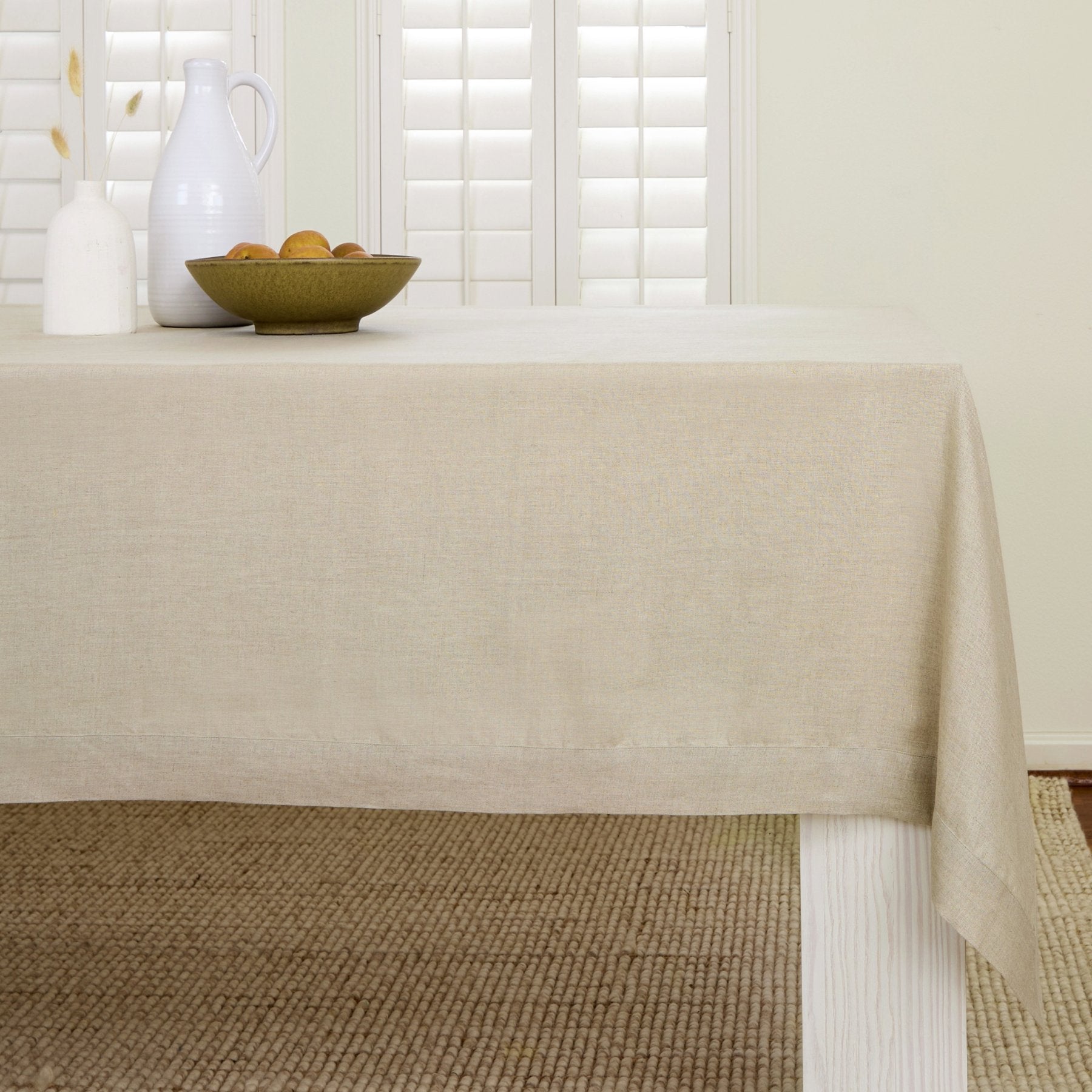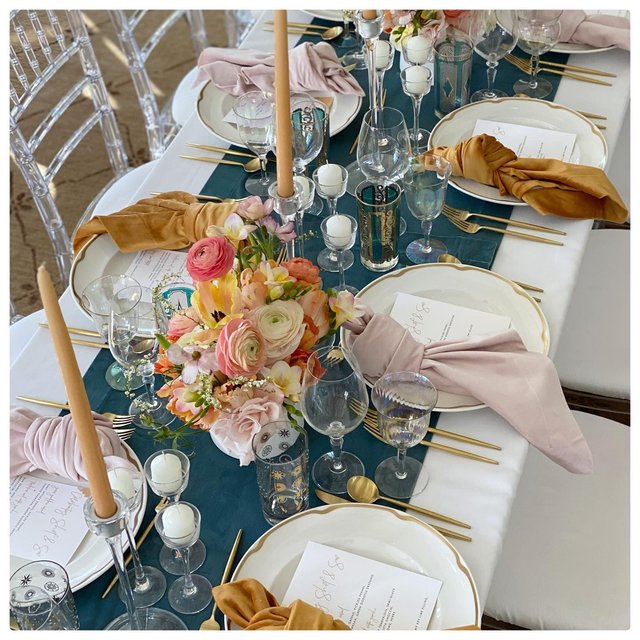How to Choose the Perfect Table Runner for Your Dining Table
How to Choose the Perfect Table Runner for Your Dining Table
Blog Article
Linen Material Technologies: Discovering Modern Trends and Creative Applications in Design and Textile Industry
From lasting production methods to cutting-edge weaving modern technologies, the advancement of bed linen is reshaping the landscape of the fabric market. As we delve right into the worlds of innovative design applications and the appearance of linen blends and hybrid textiles, a brand-new chapter unravels in which linen's duty in future fabric developments takes facility phase.
Lasting Practices in Linen Production
Lasting methods in bed linen manufacturing have come to be progressively important in the fabric market's efforts to lessen environmental influence and promote moral sourcing techniques. Bed linen, a natural fiber originated from the flax plant, uses a range of advantages such as biodegradability, breathability, and resilience. Nonetheless, conventional methods of bed linen production can include significant water usage, chemical use, and energy-intensive processes.
To attend to these challenges, numerous fabric manufacturers are embracing lasting practices throughout the linen production procedure. This consists of sourcing flax from organic farms that prevent hazardous chemicals and chemicals, implementing water-efficient retting methods to essence fibers from the flax stalks, and making use of green dyes and finishes. Furthermore, some business are spending in renewable resource sources to power their production centers and minimizing waste through recycling and upcycling initiatives.
Technological Improvements in Bed Linen Weaving
With the expanding focus on lasting practices in linen production, the textile market is now observing a rise in technical advancements specifically targeted at changing the art of linen weaving. These developments are reshaping the way linen fabrics are produced, providing enhanced effectiveness, high quality, and creative thinking in weaving strategies.
Among the crucial technical improvements in linen weaving is the combination of electronic looms. These innovative looms are outfitted with software program that permits detailed and intricate layouts to be woven with accuracy. By digitizing the weaving process, producers can accomplish greater consistency and precision in their bed linen textiles.
Moreover, improvements in yarn spinning technology have enabled the production of finer and even more long lasting bed linen yarns - table cloths. This leads to softer and smoother bed linen materials that retain their high quality even after multiple usages and laundries
In addition, the advancement of environment-friendly dyeing processes and coatings for bed linen textiles is getting grip. These sustainable methods not only decrease the environmental influence but also satisfy the increasing customer need for ethically generated fabrics.
Creative Design Applications for Linen
Ingenious creative methods are increasingly forming the imaginative design applications for linen in the fabric sector. Linen's natural aesthetic allure and capacity to mix with other textiles make it a favorite choice for creating unique garments and accessories that provide to the eco aware customer.
Moreover, developers are trying out linen in home style, utilizing its durable and breathable nature to craft fashionable furnishings such as drapes, bed linen, and furniture. The appearance and drape of bed linen bring a sense of sophistication and comfort to interior spaces, adding a touch of beauty to modern homes.

Linen Blends and Hybrid Fabrics

Crossbreed textiles, on the various other hand, take the principle of mixing a step further by including additional elements such as metallic threads, recycled products, or conductive fibers. These ingenious fabrics not only expand the style possibilities yet additionally present practical elements like conductivity, antimicrobial buildings, or enhanced durability. Hybrid materials are increasingly being made use of in numerous industries, including fashion, interior decoration, and technological textiles, where the need for multifunctional materials gets on the rise.
Bed linen's Duty in Future Fabric Innovations

In the world of future fabric advancements, view website bed linen is anticipated to be a principal in the growth of innovative useful materials. Developers and researchers are exploring ways to improve linen's fundamental qualities via technological improvements, such as incorporating wise fabrics, nanotechnology, and performance surfaces. These innovations aim to elevate bed linen's performance attributes, making it appropriate for a broader variety of applications, from activewear to protective clothing.
In addition, the combination of linen with various other all-natural or synthetic fibers opens up endless opportunities for producing novel textiles with unique residential properties and capabilities. By leveraging linen's qualities and discovering innovative blends, the textile market is poised to introduce exciting developments that cater to evolving customer demands and sustainability demands.
Verdict
In final thought, the expedition of lasting techniques, technological innovations, imaginative style applications, bed linen blends, and its role in future fabric innovations highlight the continual advancement of linen material in the contemporary design and textile industry. With a concentrate on development and creativity, the flexibility and environmentally friendly nature of linen make it a useful material for designers and makers alike, leading the means for this contact form more advancements and advancements in the area of fabrics.
As we dig into the worlds of imaginative layout applications and the appearance of bed linen blends and crossbreed fabrics, a brand-new chapter unfolds in which linen's duty in future textile advancements takes center stage.
Exploring the combination of linen with various other fabrics has led to the introduction of innovative blends and crossbreed textiles in the contemporary textile market. Linen blends offer a special combination of the qualities of bed linen with those of other fibers, resulting in textiles that possess improved buildings such as raised longevity, boosted draping, and decreased wrinkling.The development of linen blends and hybrid materials has set the phase for Linen to play a crucial function in driving future fabric developments.In the realm of future fabric advancements, bed linen is anticipated to be a vital gamer in the advancement of sophisticated functional materials.
Report this page